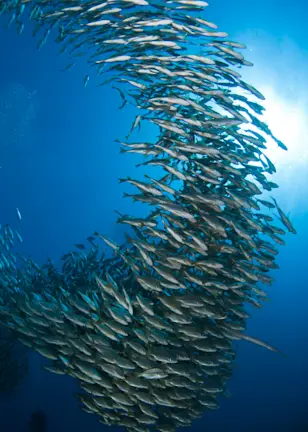Disclaimer
This page is intended for US prospects, clients and investors only and includes information about the capabilities, staffing and history of Robeco Institutional Asset Management US, Inc. (RIAM US) and its participating affiliates, which may include information on strategies not available in the US. US Securities and Exchange Commission (SEC) regulations are applicable only to clients, prospects and investors of RIAM US. Robeco BV, Robeco HK and Robeco SH are considered a “participating affiliate” of RIAM US and some of their employees are “associated persons” of RIAM US as per relevant SEC no-action guidance. Employees identified as access persons or associated persons of RIAM US perform activities directly or indirectly related to the investment advisory services provided by RIAM US. In those situations, these individuals are deemed to be acting on behalf of RIAM, a US SEC registered investment adviser. RIAM US’s SEC registration should not be viewed as an endorsement or approval of RIAM US by the SEC. RIAM US maintains its offices at 230 Park Avenue, New York, NY 10169.
By clicking I Agree, I confirm that I have read and understood the above.
Sustainable Investing
Corruption definition
Corruption is defined as behavior by individuals that aims to secure a monetary advantage in business or politics through illegal dealings. It typically covers bribery – illegal payments made to secure a contract or service – along with falsifying documents to enhance the value of a product. The word itself derives from the Roman Latin past participle of corrumpere, meaning ‘to mar, bribe or destroy’.
Investopedia defines it as “dishonest behavior by those in positions of power, such as managers or government officials. Corruption can include giving or accepting bribes or inappropriate gifts, double-dealing, under-the-table transactions, manipulating elections, diverting funds, laundering money and defrauding investors.”1
Transparency International, which works to expose corruption among governments, companies and wealthy or powerful people, defines corruption as “the abuse of entrusted power for private gain”.2 This can involve cronyism, where someone’s friends are given valuable contracts outside the normal market tendering process, and nepotism, where a relative is appointed to a position of power even though they are unqualified or unsuitable for the role.
Returns that benefit the world we live in
Country Sustainability Ranking
Levels of corruption in countries accounts for 10% of the weighting in the Robeco Country Sustainability Ranking, making it one of the most significant things that analysts look for when assessing how sustainable a nation is. This information is then used as part of the governance factor in ESG when deciding whether to buy that country’s sovereign bonds.
The two sources for it are the Corruption Perception Index, which has been published by Transparency International since 1995, and the Control of Corruption (CoC) Index, which is one of the six Worldwide Governance Indicators that have been published by the World Bank since 1996. The CoC “reflects perceptions of the extent to which public power is exercised for private gain, including both petty and grand forms of corruption, as well as ‘capture’ of the state by elites and private interests”.3

Some financial crime broadly falls under the banner of corruption, though money laundering and insider dealing are seen as specific crimes in their own right. Ponzi schemes in which profits are paid to investors using the income from newer investors instead of an underlying asset is similarly viewed as financial fraud. The biggest pure source of corruption remains bribery, which has often proved commonplace in emerging markets that lack regulation or a properly functioning judicial system.
See also:
Many companies including Robeco put limits on the value of gifts that employees can receive as presents or hospitality to avoid charges of undue influence.
Footnotes
1https://www.investopedia.com/terms/c/corruption.asp
2https://www.transparency.org/en/what-is-corruption
3https://info.worldbank.org/governance/wgi/Home/Reports
















